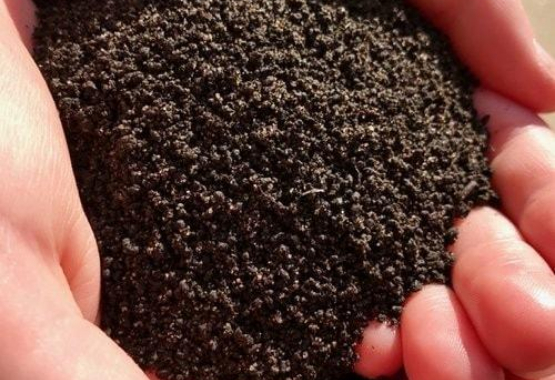The Best Soil for Succulents - What You Must Know
Help Your Succulents Thrive in Any Conditions
Are you trying to find the best succulent soil for your succulents or cacti? If you’ve spent any time researching online, you’ll quickly see that there are about as many soil mixtures for succulents as there are cactus in the desert. So how do you know what will work for your succulents?
The good news is succulents are extremely versatile and can do well in a multitude of soils and situations. There’s a decent chance that your succulents will grow and survive even if you don’t find the absolute best solution.
However, there are some soils that are definitely better than others. If you want your plants to grow fast, bloom out beautifully and completely thrive, you’re going to have to zero in on a superior solution. So what makes a good soil mixture for succulents anyway?
Drainage
One of the most critical factors in choosing a soil for your succulents or cacti is drainage. If the substrate that you choose doesn’t drain well, then your plants are going to suffer. One of the amazing things about this type of plant is that it doesn’t require a lot of water to thrive. Think about it…in their natural environment, they’re growing in the desert where it rarely rains. This means that they can soak up water and hold onto it like it’s the last drop they’ll ever see.
If you put your succulent into a soil that holds onto water, there’s a good chance that you will waterlog the plant. This also leads to an environment that is ripe for rot and plant disease. In order to ensure your succulents don’t eventually become surrounded by mold, you’ll need to make sure the substrate you put them in lets the water flow through freely.
When you think about where cactus are typically located in the wild, they’re usually growing in sand or some combination of sand and something else. Sand is extremely coarse and doesn’t absorb water. When you pour water onto a pile of sand, it goes straight through and only stays wet fora short period of time. While some succulents can grow in straight sand, this isn’t usually the ideal soil to grow in. Having some sand can be a good thing, but most succulents will do better in a combination of sand and something else.
One of the drawbacks of growing straight in sand is that it doesn't always provide the best physical support for the plant. Sand doesn’t usually pack together that well, which means plants can’t grow that big in just sand. They’ll fall over unless they have something else to help hold them in place. To ensure your succulents or cacti grow bigger, you’ll need something to provide better support.
Organic Matter
Besides ensuring that your soil mix has sufficient drainage, it’s also important to have some kind of organic matter. The organic matter helps provide nutrients and minerals to the succulent, and in most cases, also helps absorb and regulate moisture for the plant.
Choosing the right organic material can be difficult. In many cases, if you have too much organic material, the mix will hold onto water, which leads to a host of problems for your plants. Typically you’ll want somewhere between 30% and 50% organic material in your mix, depending on where and what you’re growing.
Common types of organic matter for succulents
-
Peat Moss
One of the most common organic materials used in succulent soil is peat moss. This is a plentiful and cheap ingredient that does have some benefits. However, it’s not the best at regulating moisture for succulents. If you water too frequently, it can hang onto the moisture and waterlog the plants. If you let it dry out, then it can actually prevent water from getting into the soil. In that case, when you water, the water will often find its way around the outside of the soil completely. This makes peat moss a middle of the road option for organic matter in succulent substrate.
-
Potting Soil
Another commonly used organic material ingredient for succulent mixes is potting soil. You can find many variations of this at any home or garden center. The quality of potting soils varies greatly from one to the next. If you decide to add potting soil to your mix, it’s best to use it sparingly so as not to prevent proper drainage. Some potting soils really hold onto the water, and with succulents…less (moisture) is more. Potting soil is kind of a generic term also. There could be many different ingredients in the bag, so when you're looking at options, make sure you read the label. It’s best to avoid ones that are high in peat moss.
-
Compost
If you have a compost pile, you may want to use some of it for your succulent mix. This can be a valuable source of organic material for your plants. As with potting soil, compost can vary greatly from one source to the next. In one batch, you might have an abundance of table scraps and leaves. In another batch, it’s full of grass clippings and bark. It’s a good idea to make sure that your compost is fully decomposed and no longer hot. Also, be aware that your results can vary from one plant to the next when using compost as your organic material. The nutritional composition will be different with each batch.
-
Pine Bark
In many succulent mixes, you’ll find pine bark. Why would you want bark from a pine tree in your mix? For one thing, it can hold some moisture. However, it also has built-in air pockets, which provide the proper amount of ventilation and air flow. It also doesn’t decompose rapidly like some other organic materials, so your succulents will receive benefits for a longer period of time. Pine bark is very hard, so it provides the benefits of an organic material while also acting somewhat like a mineral material.
-
Coco Coir
Coco coir is a very popular addition to succulent mixes, as it provides a variety of benefits to your plants. It’s also cheap, renewable, and readily available in most areas. Coco coir handles water very well when used as part of a substrate for succulents and cacti. It will readily absorb moisture when you water the plant, but will also release it and allow drainage. Its great at allowing oxygen to get to the roots of the plant as well.
Side note: When buying coco coir by itself, make sure that it’s pre-washed or you wash it yourself before application. Coco coir typically has salt on it, so you’ll want to rinse it off in the water before planting anything in it. Otherwise, your plants will not enjoy it and will probably respond by dying off quickly. -
Earthworm Castings
One of the best organic material ingredients that you can include in a succulent mix is earthworm castings. Worm castings provide numerous benefits to succulents and cacti and can boost plant growth tremendously.
The physical structure of worm castings makes it impossible to pack together. This allows drainage and aeration in the soil mix. It can absorb moisture when you water but releases it well also. High-quality worm castings have thousands of beneficial microbes that help create an ideal environment for succulent growth.
Worm castings also have a neutral PH as well as numerous trace minerals and nutrients. Succulents really respond to the castings, they’re easy to handle, and they have no smell. They’re really the secret ingredient in succulent soil, provided they are high-quality castings.
When combined with other ingredients that supply drainage, earthworm castings make the perfect “secret ingredient” for your succulents. We don't call them “nature’s perfect plant food” for nothing.
The microbial life alone will make such a massive difference with your plants that you may not believe it. The trace minerals and nutrients, physical structure and moisture regulation will also play a vital role in the growth of your succulents. By adding mineral materials for drainage, you can create an amazing natural soil that succulents love.
Mineral Material
The other main component of a succulent soil mixture is the mineral material. This is a coarse, hard material that helps provide drainage and didn’t come from a living organism at some point. Some examples of minerals are volcanic rock, perlite, gravel, and sand.
There is not really a perfect amount of mineral material that goes into succulent soil, but most people recommend anywhere from 40-70%mineral material. This helps to provide better drainage in the mixture, and it can also provide trace minerals and nutrients to the plants. If you’re planting indoors, it may be a good idea to increase that percentage, so that you increase the drainage a bit.
If you use sand as a mineral material for your mixture, make sure to get the builder’s sand instead of ocean sand. The texture works better and ocean sand can have salt on it, which isn’t ideal for succulents.
What You Plant In
Besides the soil that you put the succulents or cacti in, you also need to choose the right type of planter to put them in. Not every planner is ideal for succulents. You need one that will provide the proper amount of drainage, depending on the application.
Regardless of where you’re planting, you need a planter with drainage holes in the bottom. This will allow the water an easy way to escape the area. Without some kind of drainage, there’s a chance that you’ll be dealing with mold and plant disease.
Frequency of Watering
While the substrate that you plant in and the planter you use are important, it’s also critical to water the appropriate amount. Some people get in the habit of watering their succulents like they do regular houseplants, and it doesn’t end up well. Instead of doing that, get in the habit of watering according to the needs of the succulent and the substrate that you’re using. For example, if you planted in a succulent soil mixture that is primarily mineral materials like sand, gravel, or perlite, you’ll need to water more frequently. The water will be likely to flow through this mixture and out the bottom relatively quickly.
By comparison, if you used a soil mixture that absorbs more water, then you’ll want to adjust your watering frequency. This calls for watering less often than with other mixes. If you buy a soil mix that’s already made, then follow the directions on the bag carefully. If you made one yourself, you’ll have to use trial and error, as well as your own judgment to ensure that you water properly. Check the substrate frequently to see if its dried out, too wet, or just right.
pH Considerations
If you go with a pre-mixed succulent soil, then the PH of the soil should’ve already been formulated correctly. In that case, you probably won’t have to worry about the PH. If you’re mixing up a soil mixture yourself, then it’s important to make sure it’s got the right PH for your plants. Ideally, you want something that is slightly acidic with a range of5.0-6.5.
Getting a PH testing kit is a good way to determine what your soil is. Most are inexpensive and relatively easy to use now. When mixing up the ingredients, you can look up the PH for each individual item and use common sense.
For example, worm castings have a neutral PH of about 7. If you use them in your mixture, you’ll want something that has a slightly more acidic pH such as peat or coco coir. Mix up a few variations of your ingredients in different consistencies, then test the PH of the mixtures.
Once you’ve got a mixture with some organic material, roughly half mineral material, and a slightly acidic PH, you’re well on your way to crafting the perfect soil for your succulents.
Getting Started With Succulents
Follow these general guidelines when mixing up your soil for succulents. It may take some trial and error before you get the mixture just right for the plants you’re using.
Stay flexible and make sure that you're watering with the right frequency. Before long, you’ll have beautiful succulents growing and blooming in your planters.









